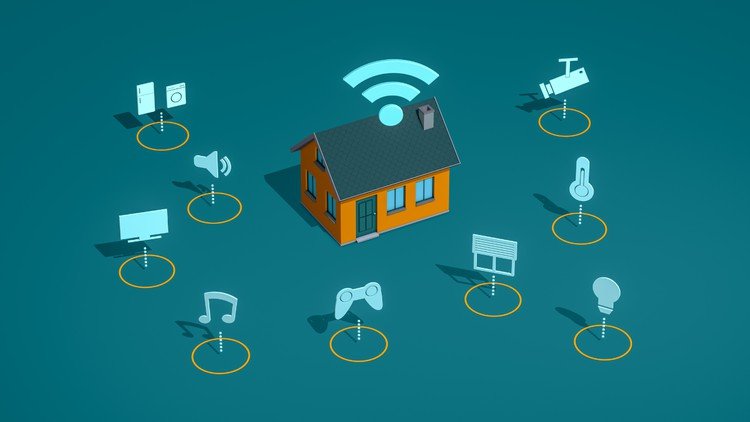Ever dreamt of a home where lights turn on with a voice command, doors unlock automatically as you approach, and your coffee brews itself before you wake up? That’s the magic of home automation, and guess what? It’s no longer just for tech enthusiasts. This guide will help you take the first steps toward transforming your home into a smart, connected space.
What Is Home Automation?
In simple terms, home automation uses technology to control and automate various devices and systems in your home. Imagine having a network of interconnected devices communicating with each other, and you, as the master, orchestrating everything effortlessly. Sounds pretty cool, right?
Why Should You Care About a Smarter Home?
A smart home offers much more than just a “wow” factor. Here’s why you might want to start automating your home:
Enhanced Comfort and Convenience
Forget fumbling for switches or worrying about whether you left the iron on. Home automation allows your home to adapt to your needs, making your daily life easier and more efficient.
Improved Energy Efficiency
Smart devices like thermostats, lighting, and appliances learn your usage patterns and optimize energy consumption. This not only benefits the environment but also helps reduce your utility bills.
Better Security
From remote monitoring to instant alerts, home automation offers enhanced security. Automated lighting and smart locks can deter intruders, while cameras provide peace of mind.
Increased Accessibility
For individuals with disabilities or limited mobility, smart home technology can be life-changing, providing control over the home environment through voice commands or smartphone apps.
Home Automation 101: The Key Components
Before jumping into the “how-to” of home automation, it’s important to understand the core elements that make up a smart home system:
Smart Devices
These are the tools that get automated—smart lights, thermostats, locks, cameras, and more. They’re the primary building blocks of your smart home.
Hub or Controller
The hub is the brain that connects and controls all your smart devices. Popular hubs include Amazon Echo, Google Home, SmartThings, and Home Assistant.
Communication Protocol
Devices communicate through various protocols like Wi-Fi, Zigbee, Z-Wave, or Bluetooth. Each protocol has its strengths depending on your specific needs.
User Interface
This is how you interact with your system. You can control your smart home with voice commands, smartphone apps, or even remote controls.
Getting Started: Baby Steps into the Smart Home World
Let’s break down the process into easy steps to help you get started.
Step 1: Identify Your Needs
What aspects of your home do you want to automate first? Lighting, security, entertainment, or energy management? Prioritize your needs, and make a list.
Step 2: Choose Your Hub
Select a smart hub that works with your chosen devices. Consider compatibility, ease of use, and features like voice assistant support (Alexa, Google Assistant, or Siri).
Step 3: Pick Your Smart Devices
Start with a few essential devices. Smart plugs are a great entry point, allowing you to turn regular appliances into smart ones. Once you’re comfortable, you can expand with more complex devices like thermostats and cameras.
Step 4: Set Up Your System
Follow the installation guides provided by your hub and devices. Most systems offer easy-to-follow instructions through their mobile apps.
Step 5: Explore and Expand
As you gain confidence, start adding more devices and experimenting with automation routines. The possibilities are endless, from scheduling lights to dim when watching a movie to automating your thermostat based on your location.
Popular Smart Home Automation Devices to Consider
Here are some devices to kickstart your smart home transformation:
Smart Lighting Systems
Control your home’s lighting with dimmable smart lights. Some even allow you to change the color and create schedules to suit your mood.
Smart Thermostats
Optimize heating and cooling with smart thermostats, which adapt to your routines, helping you save energy.
Smart Locks and Access Control
Remotely lock or unlock your doors, grant access to guests, and receive notifications when someone enters or leaves.
Smart Security Cameras
Monitor your home from anywhere, get instant alerts for suspicious activity, and even communicate with visitors via two-way audio.
Smart Entertainment
Integrate your audio and video systems into your home automation. Use voice commands to control your TV or sound system for a seamless entertainment experience.
Smart Plugs
Plug any traditional appliance into a smart plug, and you’ll be able to control it remotely or set it to run on a schedule.
Home Automation Systems: Finding the Right Fit
If you’re ready to go beyond basic automation, consider a whole-home automation system. These systems allow for comprehensive integration of multiple devices, offering seamless control and often come with professional installation for those looking for a premium experience.
Wrapping Up
Home automation doesn’t have to be complicated or expensive. By starting small and gradually expanding your system, you’ll be well on your way to a smarter, more efficient, and more comfortable home. Whether you want to control your lights with your voice, monitor your security cameras from your phone, or optimize your energy use, the possibilities are truly endless.
